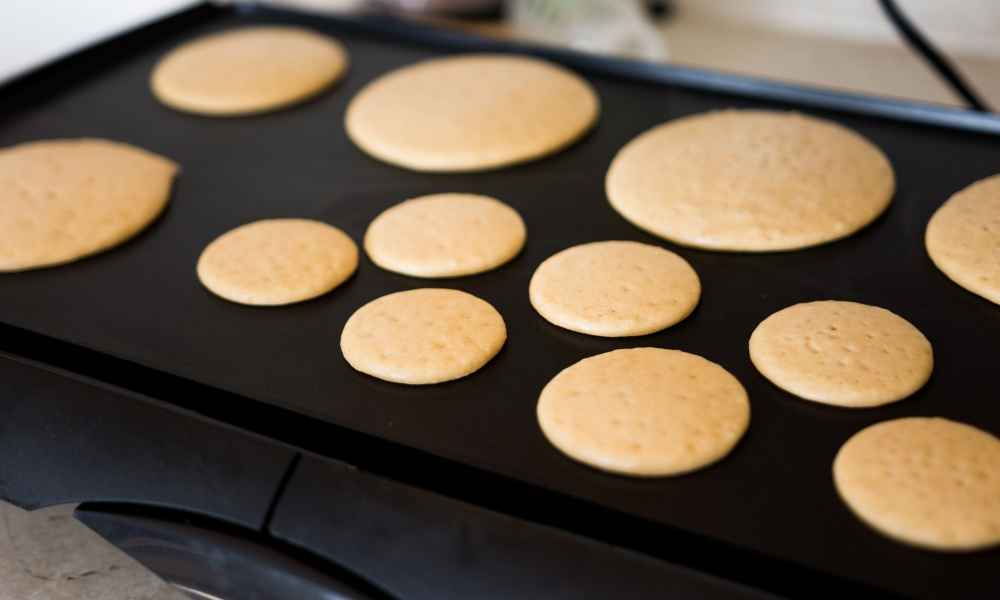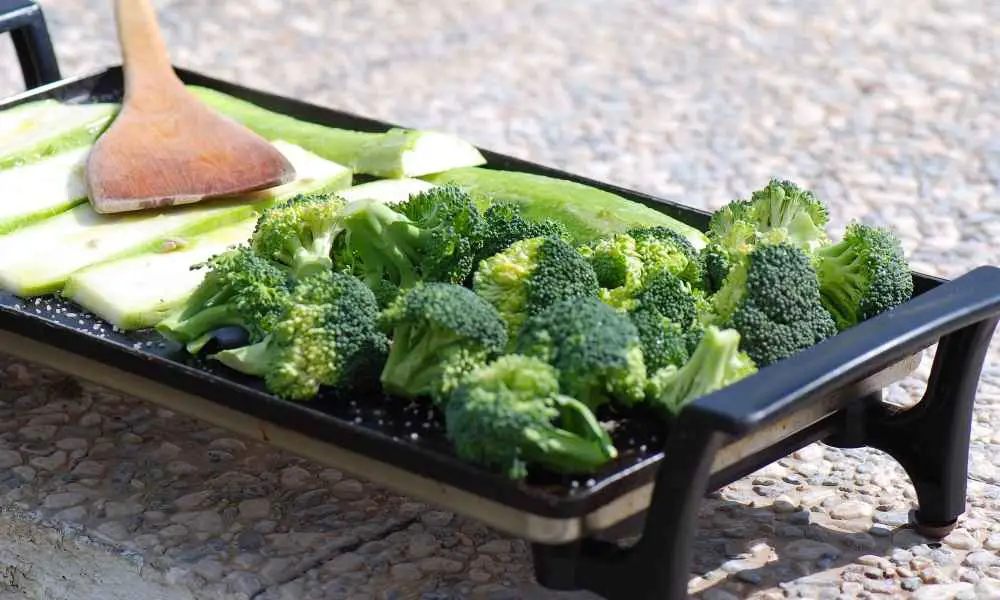It seems like many modern individuals eschewed learning about cooking because of how easy it is to order in from fast-food chains, which means quite a few adults still struggle to prepare food at home. Nevertheless, there’s still hope, as a growing number of people are getting the skills they need to create luxurious and healthy meals.
Not every meal requires the use of specialized equipment. Instead of investing in a bunch of “one-trick pony” kitchen implements, like a rice cooker or fruit zester, one of the best ways to make a variety of delicious meals is to make use of one simple but impactful kitchen tool—a griddle.
Griddles have been around for centuries. At their simplest, they are flat pieces of metal or stone that can be placed over a heat source and used to cook a variety of dishes, including tortillas, meats, vegetables, and pancakes. Contemporary models now often supply their own heat source but are still one of the best ways to prepare dozens of recipes without using a ton of tools.
To learn just how a griddle can have a lasting impact in your kitchen, as well as some important tips when it comes to using and cleaning one, then keep on reading!
1. Griddle Basics
Before cooking on one of these magnificent inventions, it’s best to familiarize yourself with the fundamentals and be prepared to make a couple of mistakes. Instead of diving into the kitchen right away, you should know what type of griddle you currently own and how to maintain and clean it properly, so it lasts a long time.
When maintained, the average griddle has a lifespan of a decade, with the simplest models surviving for even longer periods. This is because a griddle has a simplistic design and few parts capable of breaking down.
When it comes to griddle basics, it’s essential to know what it is, the different types of griddle you have available, and the proper way to cook with one.
What Is a Griddle?
A griddle, in the Western world, is typically a flat metal surface that is heated from underneath. It is meant to cook food quickly and evenly by dispersing heat across the surface. Modern metal variants are made from aluminum, carbon steel, or chrome steel, which are easy to clean and conduct heat well. Sometimes, you can find a stainless steel variation, but these are quite rare.
Most griddles are heated by one of two mechanisms: electricity or gas. When a griddle is powered by electricity, it often operates separately from an external heat source and is instead plugged into an outlet. A gas version typically works by being set on top of a stovetop, where the burners are turned on and provide the heat.
Because of their simplicity, griddles have been popular across multiple civilizations throughout history. The Scottish, for example, used a griddle suspended over a fire to cook basic items like scones and oatcakes. In Latin America, clay griddles could make tortillas and casabe. Even ancient cultures used them—the Israelites and Canaanites had griddles to make flatbread.
Because of their basic design, many people often think there isn’t variation among the models currently on the market. Nothing could be further from the truth, though, as manufacturers continue to invent new designs and have created several types of griddle to choose from.
Learn more about what griddles are used for.
Are griddles the same as skillets?
The simple answer is no.
While they are similar in use, griddles and skillets have features that set them apart.
Griddles have large and flat surfaces whereas skillets often have flat surfaces surrounded with walls. Because of this difference, it is easier to move and roll food on griddles while cooking.
However, because skillets have walls, they can accommodate liquid ingredients while cooking.
Skillets can also have lids so you can control the heat. By contrast, griddles, especially electric ones, have heat control features that give you more control over the temperature while cooking.

Different Types of Griddles
Griddles come in numerous forms because of their straightforward design. Since all that is needed is a basic metal or stone plate that can be heated by an internal or external source, there are actually numerous types of griddles.
When it comes to overarching categories, people can separate these implements as being residential, commercial, indoor, or outdoor griddles.
Residential
The residential griddle is what most of the general population has access to. These models can be used in the average home and often have either a connection to an electrical current or will sit on top of a gas stovetop.
In terms of sizing, a residential model measures ⅛ to 1/16 of an inch thick and is about 12 to 24 inches in length. These dimensions provide enough space for the utensil to either sit on two burners of the average gas range or supply enough food for the average family.
When buying a residential griddle, you might be faced with a variety of materials. These will be discussed later in more detail, but carbon steel is preferred for regular cooking.
Commercial
The commercial griddle is much larger than the residential one and is typically used by restaurants, food trucks, and other enterprises. Because these are meant to cook numerous meals at once, they are quite large. The average commercial griddle can come in at 24 to 72 inches in length, although the thickness stays at ⅛ to 1/16 of an inch.
These units have some slight differences from the residential model. In particular, each one needs to have temperature control, a plate, and a heat source. These are rated on performance, especially when it comes to productivity and how much food is prepared in the span of an hour.
Most people won’t purchase a commercial griddle, but if you’ve ever wanted to run a food stand, truck, or even a restaurant, you will need one.
Indoor and Outdoor
When people imagine a griddle, it’s almost always an indoor model that can be plugged in or heated on a stove. An outdoor model is a separate beast entirely.
An outdoor griddle has more in common with the average grill. It can be heated by almost any fuel source imaginable, including gas or charcoal. Open flames are underneath the flat, smooth surface of the griddle and provide heat for cooking food.
When someone uses a griddle outdoors, they can cook meals without experiencing the overwhelming heat of cooking over a stove. These models can be kept on the back porch or taken camping, where they can make pancakes, steaks, and anything else imaginable.
Learn more about the best outdoor griddles.
Griddles Based on Heat Source
Ordinary Griddles. Usually made up of aluminum, ordinary modern griddles often use heat from stove for cooking.
Electric Griddles. These are versatile griddles with their own heat source. Just plug it in and they’re ready to use. They are usually used in homes. They feature thin plates and often feature heat control mechanisms.
Gas griddles. Gas griddles are commercial grade griddles that utilize gas or natural propane gas as their heat source. They can accommodate more due to their large surface area. That’s why they’re the preferred griddles for commercial use.
The Proper Way to Cook with a Griddle
There is no overarching right way to prepare food on a griddle, but there are definitely some tips and tricks up the average chef’s sleeves.
First and foremost, it’s essential to allow the metal surface to heat thoroughly before applying some type of fat. Most of these dishes aren’t non-stick, so butter, olive oil, or even regular cooking fat are crucial to making sure food doesn’t stick. Some people recommend leaving a little bit of grease or fat to function as a seasoning, but that can create rancid buildup over time, especially if you don’t cook large amounts of food every day.
When you use a stovetop griddle, it’s possible to create designated heat zones by balancing the dish on multiple burners. The temperature underneath is easy to control, and it’s then possible to produce a variety of more fickle foods, like eggs and pancakes, at the same time. This isn’t as possible with an electric model.
Finally, it’s also important to let the griddle heat up enough before putting food on it. If it’s not given adequate time to warm up, the food will cook unevenly and will take a long time. To test before cooking, drip some water on the surface. When the water bubbles, the griddle is ready to go.

2. How to Make the Best Everyday Meals
The entire point of owning a griddle is to create excellent meals. Even if you’re not planning a special event, you can still make great everyday options that will keep you, your family, and your friends satisfied.
To truly make great food, there are a couple of steps you have to do besides cooking. In particular, it’s essential to keep the dish clean and sanitary; otherwise, the food will taste rancid.
How to Clean a Griddle
Cleaning a griddle after use is the most important step you can take to preserve its health and longevity. Too many people don’t clean their griddle properly, and this leaves behind food particles and grease that affects the flavor of future meals. It can also create sticky substances for bacteria to grow.
Here’s a step-by-step guide to cleaning a griddle:
Step 1: Prepare it for cleaning
When cleaning a griddle, the first step is to allow the surface to cool down. Trying to clean a hot griddle can result in burns. Once cool, scrape the surface using a spatula or similar tool to remove excess oil and grease.
Step 2: Give it a wipe down
Next, wipe down the top with a paper towel. You can use a basic dish towel, but it will get greasy, and this might not come off in the washing machine. If any residue remains behind, pour a small amount of warm water on the problem areas. Do NOT use soap because it can become trapped in grease.
Step 3: Scrub!
Get a nylon scrubbing pad and gently work on tough areas where oil or seasoning is trapped to the cooking surface. Once the debris is removed, rinse with warm water.
Step 4: Let it dry
For the final step, use a cloth to blot and wipe the griddle dry. This will prevent rust from developing on the metal. Whenever possible, do not allow water to stand on the implement, as nothing can cause it to degrade faster than water.
How to Use a Griddle On a Stovetop
A stovetop griddle is one that can be placed directly on the stove. The best ones function on gas and electric stoves and should be easy to clean and store when no longer in use.
The best way to use a stovetop griddle is to pay attention to what model you buy and whether it works better when placed on a gas or electric range. Most are meant to be used with gas, so be careful when trying to use one to work with an electric stove.
Here’s how to use a stovetop griddle:
Step 1: Find the right position
To use this type of griddle, place it on one burner or two burners that are close to one another. You want an even dispersion of heat, so try to keep the center of the burners on the left and right of the griddle. If your burners are uneven, balance the griddle on one.
Step 2: Heat it up
The next step is to wait for the griddle to heat up. The surest sign of a griddle ready for cooking is a little bit of smoke rising from it. You can also test it by splashing a few drops of water on the surface. If it starts to bubble, you can begin cooking.
Do not allow the griddle to heat up too much, as it will produce too much smoke while cooking and burn the food. Try to keep the surface temperature between 300 and 400 degrees Fahrenheit. If your oven has an accurate stovetop temperature setting, use it.
Step 3: Add fat
Most models will need a thin layer of fat to cook food properly. Once the griddle has been heated, spread a thin layer of butter or oil on the surface. This prevents food from burning and can inject extra flavor into your dish.
Step 4: Start cooking!
If the fat starts to smoke, lower the temperature. It’s essential to apply a new layer when making multiple batches of food at once; otherwise, it will start to wear thin and food can burn.
Once you’re done with the cooking, it’s important to let the griddle cool down before cleaning. Follow the same cleaning instructions as before for the best results.Learn more tips and tricks on how to use a griddle on a stovetop.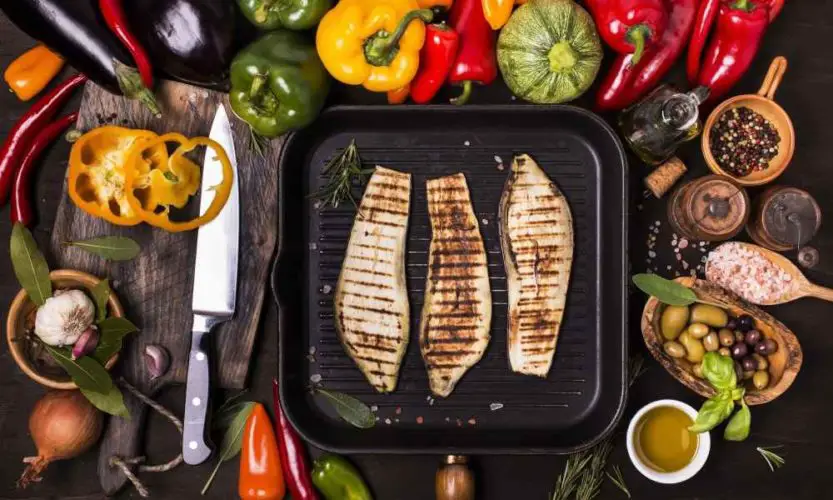
Tips on Using Griddles When Cooking Different Meals
As can be seen, a griddle is one of the most versatile cooking implements available to the modern chef. The electric griddle, in particular, offers new and innovative ways to prepare traditional foods like pancakes, chicken, and hamburgers.
Perhaps the best tip for cooking a variety of meals is to pay attention to the temperature of the surface of the griddle. Temperature control is great as it stops food from burning and allows chefs to lengthen the cooking time for more flavor.
Here are some more expert tips to keep in mind:
- Always clean the griddle when done to prevent a buildup of oil, seasoning, and food bits.
- Wait for the surface to heat up before applying food.
- Drain grease on a regular basis while cooking so that it doesn’t overflow in the trap.
- Always have a fire extinguisher nearby that can handle a grease fire.
- After basic cleaning, wipe down the surface with a thin layer of cooking oil to prep it for next time. The oil can stay on during storage.
When trying to prepare a variety of foods, it’s important to experiment to find the best method. Griddles with temperature control tend to produce the best results when handling different meals, as it’s easier to decide just how much heat the food is exposed to. For example, it is difficult to cook pancakes properly at a low temperature, but a griddle that’s too hot results in burned breakfast.
The Proper Way to Griddle Pancakes
The best and easiest way to griddle pancakes is by using a griddle that has reliable temperature control. Turn the temperature to 375 degrees Fahrenheit for preheating, and then adjust it down to between 365 and 370 once cooking begins.
Learn more about the best griddles for pancakes.
When cooking pancakes, always wait for the top to start bubbling and the edges to brown before flipping. This creates pancakes that are golden-brown and ready for consumption.
When possible, use the first pancake as a test one to see if the griddle is already at the right temperature. Don’t be afraid to experiment with the temperature control to achieve the best results.
Splitting Meat and Vegetables
When cooking a full meal that has multiple components, chefs can’t go wrong with dividing the griddle with separate sections for meat and vegetables. This keeps the flavor intact and also allows for better control of cooking times, as meat often is prepared much faster than vegetables like bell peppers.
When cooking on separate sections, make sure the griddle is not overcrowded, as this affects the preparation time. When possible, flip the meat and vegetables at the same time to simplify the process.
How to Cook Chicken
One of the benefits of the griddle is being able to cook proteins, like chicken, with even heat. The best way to prepare this meat is by using a bit of oil on the cooking surface to add some extra flavor, crispiness, and ensure that the heat reaches all of the chicken.
When possible, slice the chicken thinly so that it is easier to prepare. Thick chunks of chicken can be cooked but will take more time. Whole drumsticks and thighs can be griddled to perfection but have to be done so properly.
The trick to cooking chicken is to rotate it on a regular basis so that the sides cook evenly. Set the temperature to 350 degrees Fahrenheit and cook for 10 minutes on each side. For extra flavor, use seasonings. The result is delicious griddled chicken!
Learn more griddle recipes:
- How to Cook Shrimp on a Griddle
- How to Make Grilled Cheese on a Griddle: Tips and Tricks
- How to Cook Steak on a Griddle
- How to Cook Burgers on a Griddle
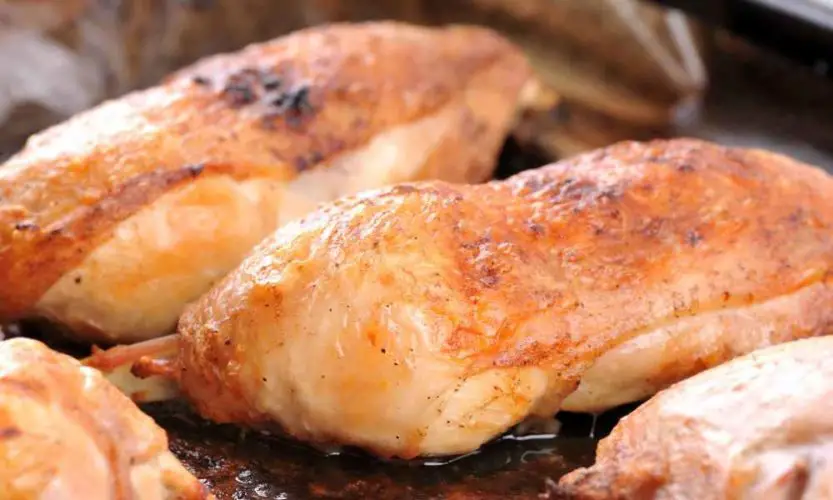
3. The Qualities of an Excellent Griddle
No two griddles are the same, even if the overall design seems so simple. As modern technology has developed, individuals no longer have to cook on stones over the fire. Now, there’s a broad range of plate materials, heat sources, and other characteristics that are made available to you.
If you are interested in finding a high-quality griddle, below, we will talk about the different factors you’d need to consider before purchasing one.
Plate Material
Almost all griddles are made from A36 steel, but numerous models are also stainless or combine a bit of aluminum in the mix. For the best results, most chefs prefer to use carbon steel because it transfers heat well and is easy to clean.
Stainless steel, on the other hand, is preferred by some residential chefs because the material is inexpensive, can be cleaned easily, and is simple to store. In some cases, it’s even possible to purchase a stone plate, although these are more common in Latin and South American countries.
Learn more about the best baking steel griddles.
The average thickness of the plate material is ⅜ to an inch thick, although electric griddle plates can be half an inch at maximum. If you want faster cooking times, a thinner plate is ideal. For a slower, more controlled cooking, consider going thicker on the plate material.
When possible, it’s a good idea to get a material that is chrome plated. Chrome is non-porous, which means that grease and oil won’t seep into the surface over time and affect the flavor of your dish. It is also easy to clean, although it can scratch easily.
Heat Source
As has been mentioned throughout this eBook, most modern griddles are fueled by either gas burners on a stove range, or via electricity. Electricity is easier to use for temperature control since the temperatures can be refined to single degrees.
When a griddle uses electricity as a heat source, it often plugs into a regular outlet. Currents run through a circuit underneath the plate, which runs in a “U” shape. This means that some sections of the plate might be a little warmer than others, but the temperature difference isn’t noticeable when cooking.
Learn more about the best extra-large electric griddles.
The downside to using electricity is that the cost can ramp up fast, especially for commercial chefs or residential cooks who want to make a ton of food. This is why most people who use electricity are average individuals who only cook one or two times a day.
Gas, on the other hand, heats up fast and is less expensive, allowing food to be cooked quickly The downside is that temperature is more difficult to control. However, propane is cheap and easy to use, so many chefs prefer this model as a heat source.
Gas also heats the plate more evenly since the hot air from the flames hits the bottom of the plate, resulting in an even cooking surface. While gas doesn’t have the failsafe features of an electric model, it is still a great choice. Ultimately, whichever one you prefer will be a matter of preference and what is available to you in your kitchen.
Learn more about the best outdoor gas griddles.
Other Features
One final feature to check is the surface of the griddle itself. This doesn’t mean the material, but whether or not the surface is smooth or ridged. A grooved surface leads to less slipping and sliding, and it can also make food look like it was grilled instead of being cooked on the griddle.
A smooth surface, meanwhile, is much easier to clean, but it means that burgers and chicken won’t have that grilled characteristic. This is more of an aesthetic decision than one that affects function, but some people feel more comfortable with food that is recognizable.
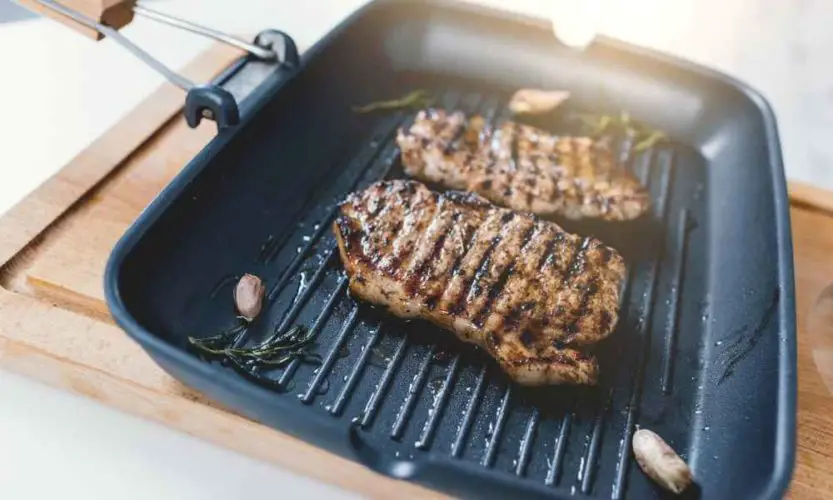
Conclusion
Griddles have a special place in anyone’s kitchen. Whether you want to whip up breakfast in a hurry or create a complex stir-fried dish using different heat sources, the right griddle will be there for you. This is why it’s important to keep it clean, choose qualities that will benefit your cooking style, and pick the right make and model.
The right griddle can last for years, so don’t be afraid to invest a little extra money at the outset to get, perhaps, a decade of repayment. If you would like more information about what makes a great griddle, some of the best models on the market, or cooking tips from the experts, please check out our reviews.


